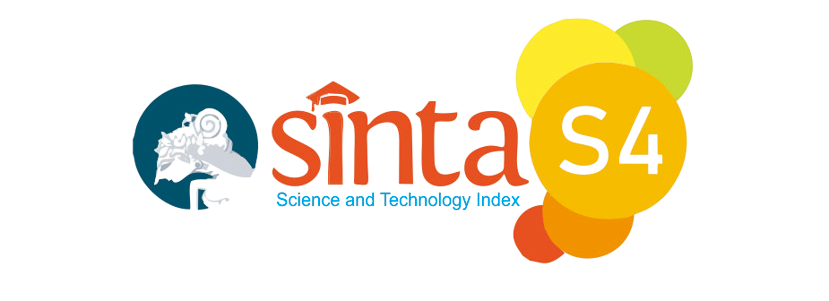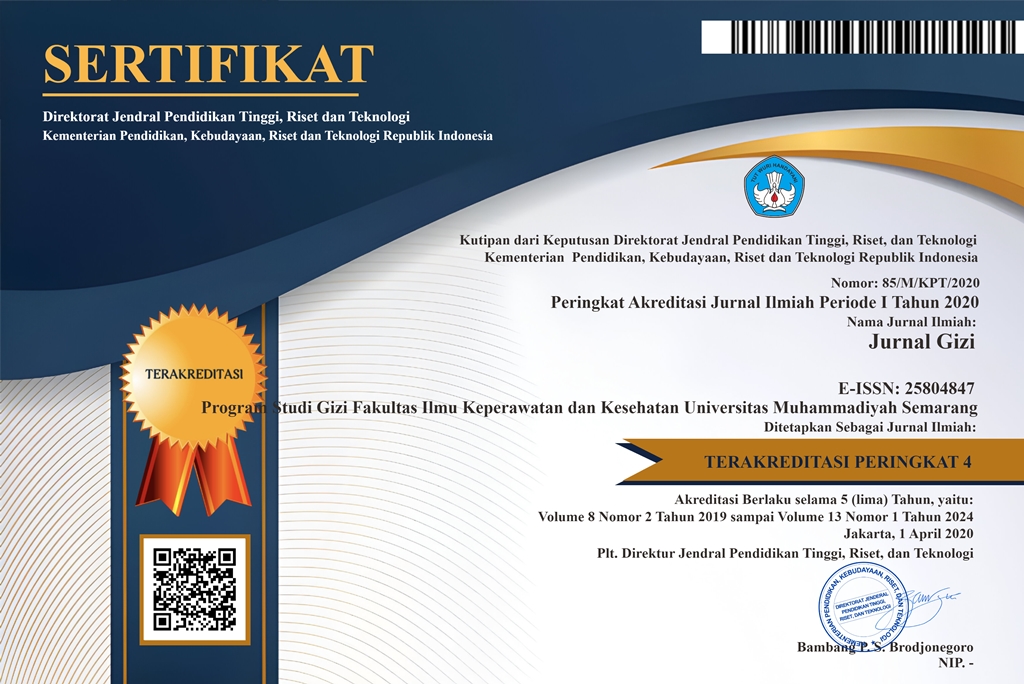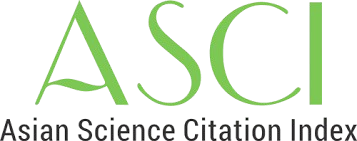Faktor Risiko Sarkopenia Pada Lanjut Usia Di RSUD Depati Bahrin Sungailiat Kabupaten Bangka
(1) Poltekkes Kemenkes Pangkalpinang
(2) Poltekkes Kemenkes Pangkalpinang
(*) Corresponding Author
Abstract
Introduction: The prevalence of sarcopenia in the elderly aged 60-70 years ranges from 5-13%, and at more than 80 years increases to around 11-50%. Research Method: Analytical observational with a cross-sectional design from June to August 2022 at the Depati Bahrin Hospital Polyclinic. The research sample of 40 people was determined by quota sampling technique which met the inclusion and exclusion criteria. The data consisted of general characteristics, BMI, muscle strength and muscle mass, consumption of energy and protein intake, and sources of vitamin D. Risk factors used a backward regression model with the IBM SPSS Statistics version 22 program.
Results: The risk of sarcopenia based on muscle mass showed a reasonably high proportion (77.5%). Protein intake was a risk factor as the most dominant predictor of sarcopenia because it has signed on both muscle mass (ρ=0.047) and muscle strength (ρ=0.027) variables. Other risk factors as predictors of sarcopenia were BMI (ρ=0.003) and vitamin D intake (ρ=0.052) in the muscle mass variable and gender (ρ=0.086) in the muscle strength variable. The regression model on the two sarcopenia risk variables has Radj values of 27.3% and 12.6%, respectively.
Conclusion: Protein intake is the most dominant risk factor because it has significance in muscle mass and muscle strength variables. Other risk factors as predictors of sarcopenia are BMI and vitamin D intake in muscle strength and gender in muscle strength.
Keyword: risk factors, muscle strength, muscle mass, elderly
Full Text:
PDFArticle Metrics
Abstract view : 135 timesPDF - 117 times
DOI: https://doi.org/10.26714/jg.14.1.2025.13-25
Refbacks
- There are currently no refbacks.

This work is licensed under a Creative Commons Attribution 4.0 International License.
Diterbitkan oleh: Program Studi Gizi (D3 dan S1)
Fakultas Ilmu Keperawatan dan Kesehatan
Universitas Muhammadiyah Semarang
Sekretariat: Jl. Kedungmundu Raya No. 18 Semarang
Contact Person : Hapsari Sulistya Kusuma, S.Gz, M.Si (+62 85 6 41 536 553)

This work is licensed under a Creative Commons Attribution 4.0 International License.










.png)
.png)
_.png)